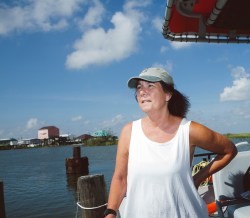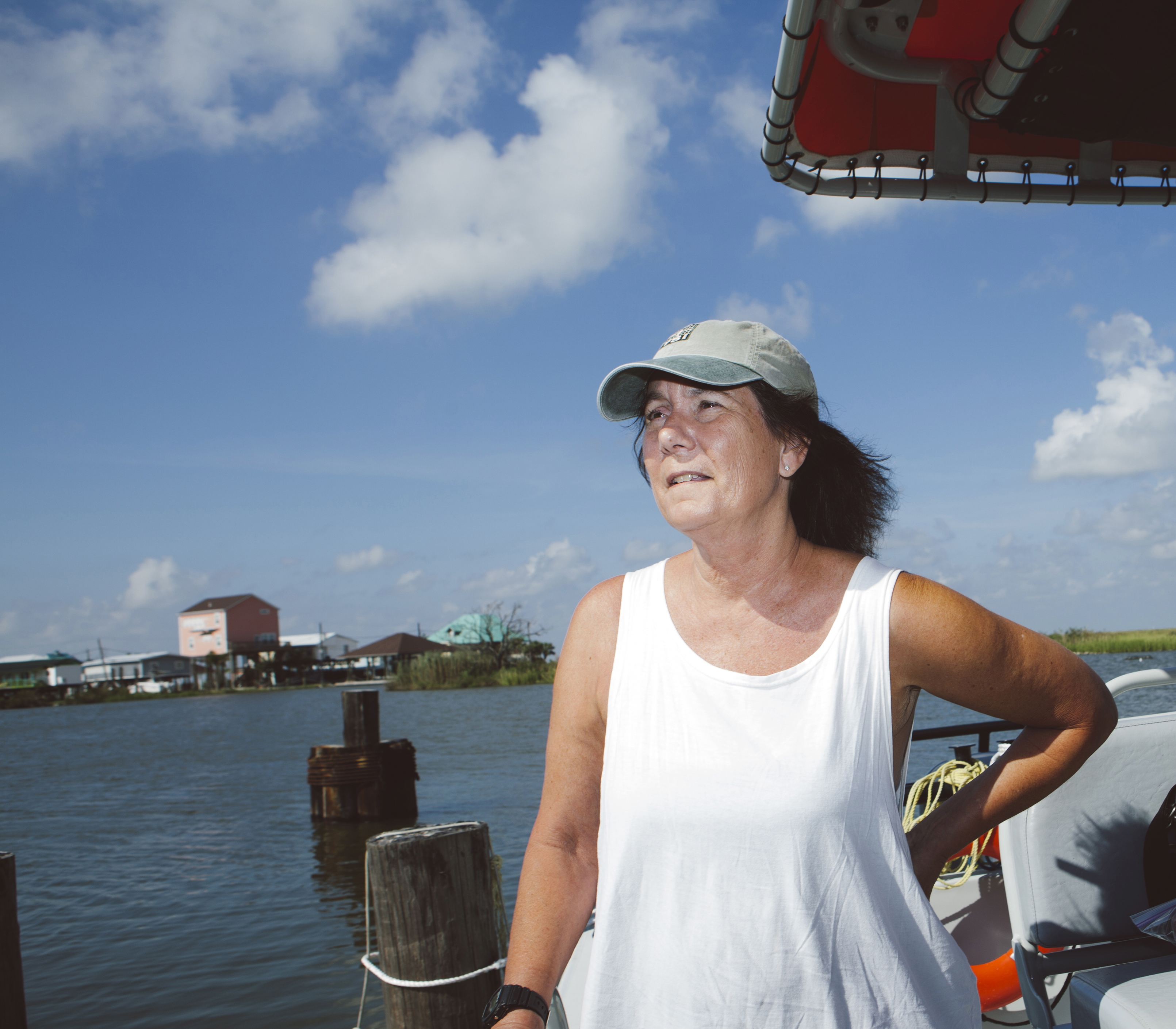
John D. & Catherine T. MacArthur Foundation
Nancy Rabalais doesn’t quit. This marine ecologist has been doggedly studying, speaking about, and agitating to improve the Gulf of Mexico’s dead zone for over three decades. Currently the executive director and a professor at the Louisiana Universities Marine Consortium, Rabalais is quick to point out that the dead zone is not only one of the biggest human-made disasters we face today, but it’s one we can still reverse if we choose to. (You see, rain washes a steady stream of nitrogen from excess fertilizer and animal waste that heads down the Mississippi River and out to the Gulf. These nutrients create algae that sinks, decomposes, and eats oxygen. The result is an oxygen-free area or underwater desert — a dead zone.)
Last week, Rabalais was awarded a highly sought-after MacArthur Genius Award. Whereas some MacArthur recipients may take the award as a sign that their work has peaked, this scientist appears to see it as a means to an end, a way to advance her message and to help protect a crucial body of water.
We spoke to Rabalais recently about her work, the recognition, and how our diets impact the dead zone.
Q. First of all, congratulations on the award. It’s great to see you get recognition for this important work.
A. Thanks. I’m not so sure I’m a “genius”; I’m just persistent. I’ve been working on this for so long and it’s important.
Q. I think persistence might be a form of genius.
A. I guess so.
Q. I’ve never seen a dead zone, and most of our readers probably haven’t either. Would you mind describing the one in the Gulf of Mexico for us?
A. One of the reasons it has been so difficult to raise the visibility of this issue is that it’s very difficult to visualize from the surface of the water or from a plane. From land you can’t see it at all. When the hypoxic [or low oxygen] water gets close to shore, you can have a fish kill if the fish get trapped. But otherwise, you need to dive, or use special instruments.
If you’re diving and you start at the surface, you can usually see some greener water because of the phytoplankton, then you drop down a little bit and it gets clearer, and then you go past a density difference, which is like a shimmer on the landscape. You get below that and you basically don’t see any more fish from there to the bottom, and the water toward the bottom gets very turbid and black. Up on the diving platforms there are lots of barnacles and living things, then once you get into the low-oxygen area, you won’t see anything — just black detritus.
Q. Do you want to talk about why this year’s dead zone is smaller than it has been in recent years?
A. This year we experienced a drought on the Mississippi River. We had fewer nutrients coming down in the spring, and the hypoxia didn’t develop like it usually does. But it wasn’t really because of any management changes in the watersheds. It’s an annual cycle. The river discharge goes up in the spring, as does the nutrient load. [The dead zone] is the worst in June, July, and August, but it’ll last into September and October depending on the tropical storms. In winter we have a series of cold fronts that mix up the water, and you don’t get any of that low-oxygen area.
Q. So the ecosystem bounces back some in the winter, but if the hypoxia wasn’t occurring in the first place, it sounds like there would be a lot more life there generally?
A. The animals that live in the sediment die back dramatically in summer, so the amount of food available to fish and shrimp when they come back into the area is much lower than if they hadn’t been knocked back in the summer.
The hypoxia occurs at a time of the year when the juvenile brown shrimp are migrating from the coastal marshes to further offshore. They hit this wall of low oxygen and they don’t go any further. They’re usually caught at a smaller size, so there’s actually a loss of potential productivity in the fishery.
Q. You’ve done some collaboration to work on reducing the runoff from farms and livestock facilities. Do you want to talk about how well that has and hasn’t worked?
A. We got the government to pay attention in 1994. There was a Washington Post article on the front page, which caught people’s attention. Then began a longer-term study that looked at everything from causes to the economics, and a state/federal task force was formed. There was legislation that Sens. Olympia Snowe and John Breaux developed called the Harmful Algal Bloom and Hypoxia Research and Control Act [PDF], because phytoplankton is the source of both algae blooms and hypoxia. Since then there have been reviews, re-reviews, more task forces, action plans, etc. And we’re still at the very beginning of taking any real action, as I see it.
Q. That must be frustrating considering how long you’ve worked on this issue.
A. Yes, it is. On the bright side, there are many more educated people in the Midwest. There are those who are trying to make a difference with sustainable agriculture and best management practices, but we still have a long way to go.
Q. What can the average person do to help?
A. There are lifestyle choices you can make. The higher up you’re eating on the food chain, the more land and water resources you’re using, and the more nitrogen gets sent into the Gulf.
It takes a lot of nitrogen to grow the corn that gets eaten by chickens, cows, and pigs. We have a picture of a pig in our office that says, “eat more fish.” And a cow that says, “eat more chicken.” But we’ll need to go a little bit lower than that. Eat more pasta, more vegetables.
Part of the atmospheric deposition that comes down as nitrate is also generated by fossil fuel burning — and that’s from power plants and automobiles.
Q. Are there things you can do down in the Gulf to improve the dead zone?
A. Not really. Once it gets into the river, it gets piped down to the Gulf. You can use buffer strips, you can make artificial wetlands up in the Midwest, you can do lots of things, but the source is in the middle of the U.S.
You can’t put aquarium bubble stones [to add oxygen] down in the Gulf and make a difference. It’s too voluminous.
Q. I’ve read that your research facilities have been impacted by storms and hurricanes over the years. Has the weather endangered your work?
A. As long as we have a boat and a roof over our head in the lab — which is usually the case — we can continue. It’s usually competitive research funding that might dampen our ability to keep doing it. And the federal government is cutting back on research of this type.
Q. Will this MacArthur funding ($500,000) help?
A. It’ll go toward things that might not get covered in the future, like travel and stipends and small boat use. But it costs a lot to put the research vessel in the water, so I can’t use it for that — it wouldn’t last very long.



